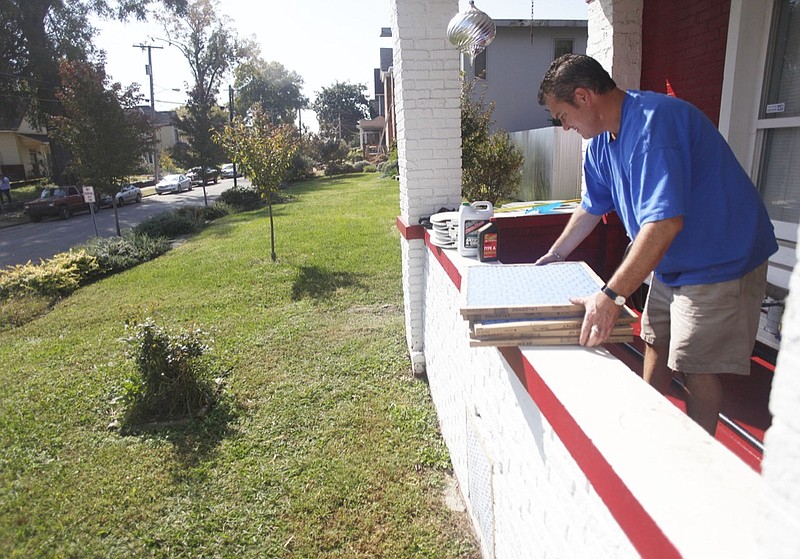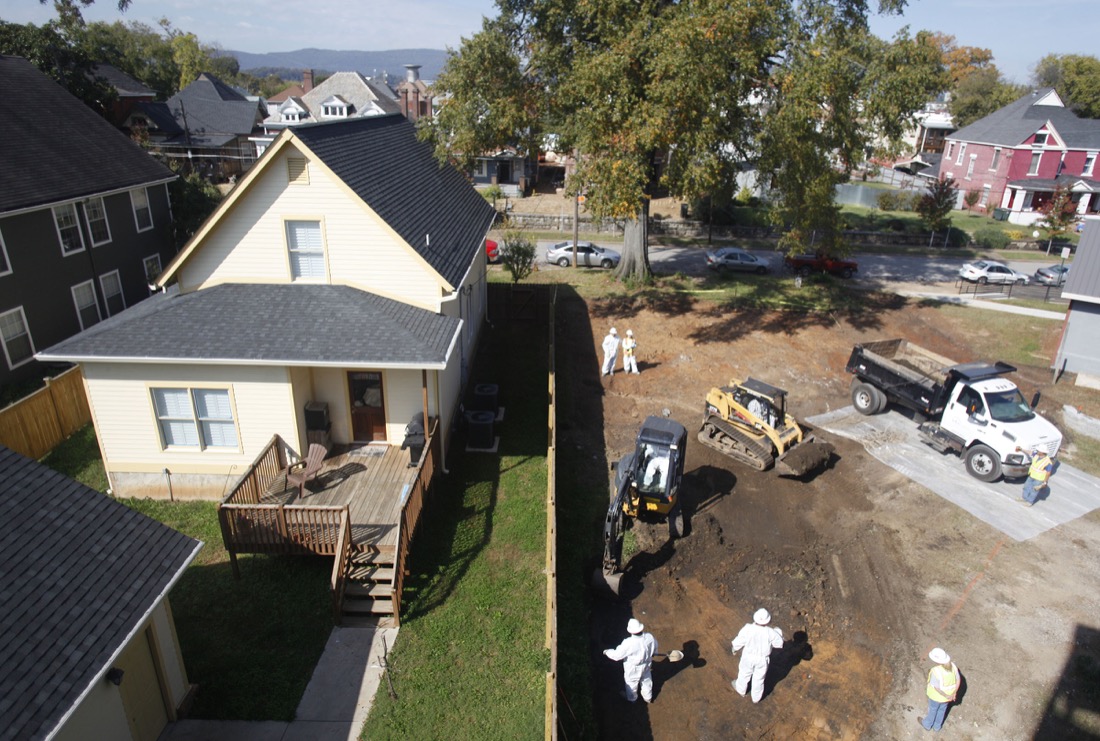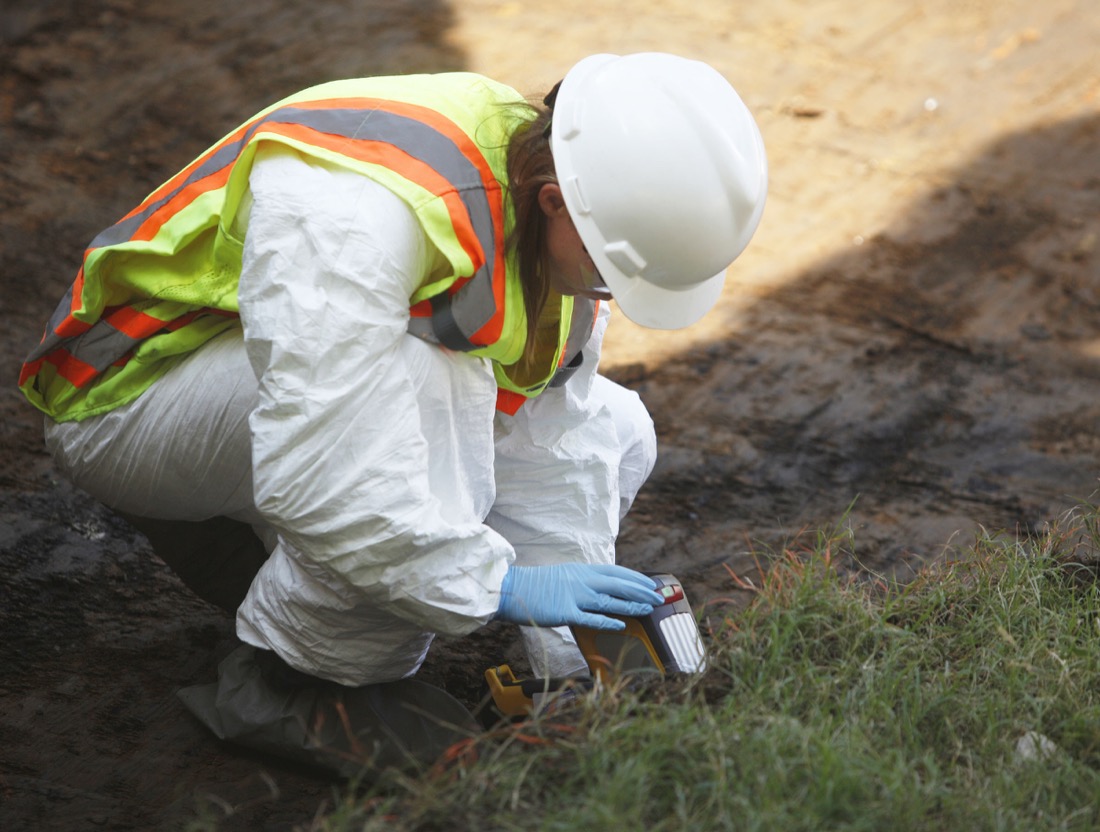In October of 2012, a former Times Free Press reporter wrote: "Crews in hazmat suits will be a regular fixture in the yards of Chattanooga's Southside for the next several months as the U.S. Environmental Protection Agency works to remove toxic levels of lead from soil on 68 residential properties."
The project, already deemed "extensive," was concentrated on Read and Mitchell avenues, where mostly turn-of -the-20th -century homes had been renovated, and the area had gentrified, becoming a trendy mixed neighborhood in the newly booming southernmost edge of downtown Chattanooga.
The EPA had first been alerted to the potential contamination of soil in the area a year before by Tennessee health and environmental officials after a resident on Read Avenue who liked to garden showed up in an emergency room with lead poisoning. Initial tests of soil in the patient's yard by the Tennessee Department of Environment and Conservation and the Chattanooga-Hamilton County Health Department found it to be "hot" with lead contamination. More testing later that fall found more yards with more lead trouble.
Fast forward six years (or maybe not so fast), and now several more neighborhoods have been added to the danger list. As a matter of fact, they've been added to a list of the America's most toxic places.
The action comes in a move expected to open up additional funding for cleanup.
The Superfund National Priorities List, according to an EPA announcement Tuesday, now includes properties in Alton Park, Cowart Place, Jefferson Heights, Richmond and Southside Gardens. The approximate boundaries of the site are Main Street to the north, Broad Street to the west, Chattanooga Creek to the south and Central Avenue to the east, according to the NPL listing.
It is an unintended consequence of our city's proud, but stained, industrial heritage.
The Southside area was home to industrial operations throughout the mid-19th and 20th centuries - operations that used toxic waste material as fill and topsoil during years when the dangers of such "recycling" was largely unknown. At that time - after years of the undammed Tennessee River more than once inundating the city and even rising to what then was the second floor of the original Read House - elevating Chattanooga with whatever fill dirt was available likely seemed the epitome of necessity becoming the mother of invention.
Nonetheless, today's residents are frustrated - and rightly so.
In the six years after men in moon suits first showed up in the backyard of the Church on Main in the Southside with test vials, residents have been concerned. They learned about a problem that has existed for at least a century. Many raised their children to play in their toxic yards and not just a few grew gardens. EPA officials told them they would work as quickly as possible. Here we are in 2018. Nearly 100 yards have been cleaned up and new sampling has found about 150 more that still need to be cleaned.
"My main problem with everything I heard [from EPA about the potential cleanup] is that it makes no sense that the EPA became aware of this just because someone became ill," Ed Nowicki, a property owner, told the Times Free Press last February. "You had a major industrial area that has historically been an issue for the last 100 years. One would imagine that is a red flag and a possible contamination site."
No joke. It's not as though we haven't now known for the last 50 years that lead contamination can be deadly, and that industrial foundry sands and ashes contain lead. Read and Mitchell avenue homes may have been built before those revelations, but many homes built, remodeled and marketed in the Southside's new boom were not. Were those properties checked? Was the lead removed? If not, why not?
Did developers think asking forgiveness later (replete with federal funds for the future cleanup) would be cheaper than assuming the worst and remedying the land first? Did they try remedies that simply were not enough? Were they just oblivious to potential problems? Do Hamilton County and Chattanooga building inspectors and planners have enough pre-testing regulation in place to prevent these debacles? What will they do about it? And what about other local neighborhoods?
These are questions to which we don't yet have answers.
But know this: We will be asking these questions - and we hope you will join us in demanding both answers and new heartfelt assurances.
Chattanooga will not stop growing and gentrifying. Indeed - the Alstom property, the Wheland property, the U.S. Pipe property all sit fallow awaiting reinvention.
Lead and other contamination should not stop that reinvention. But cleanup should be part of the preparation, not an "oops" after the fact.
This is 2018. We need to act like it's 2099.


